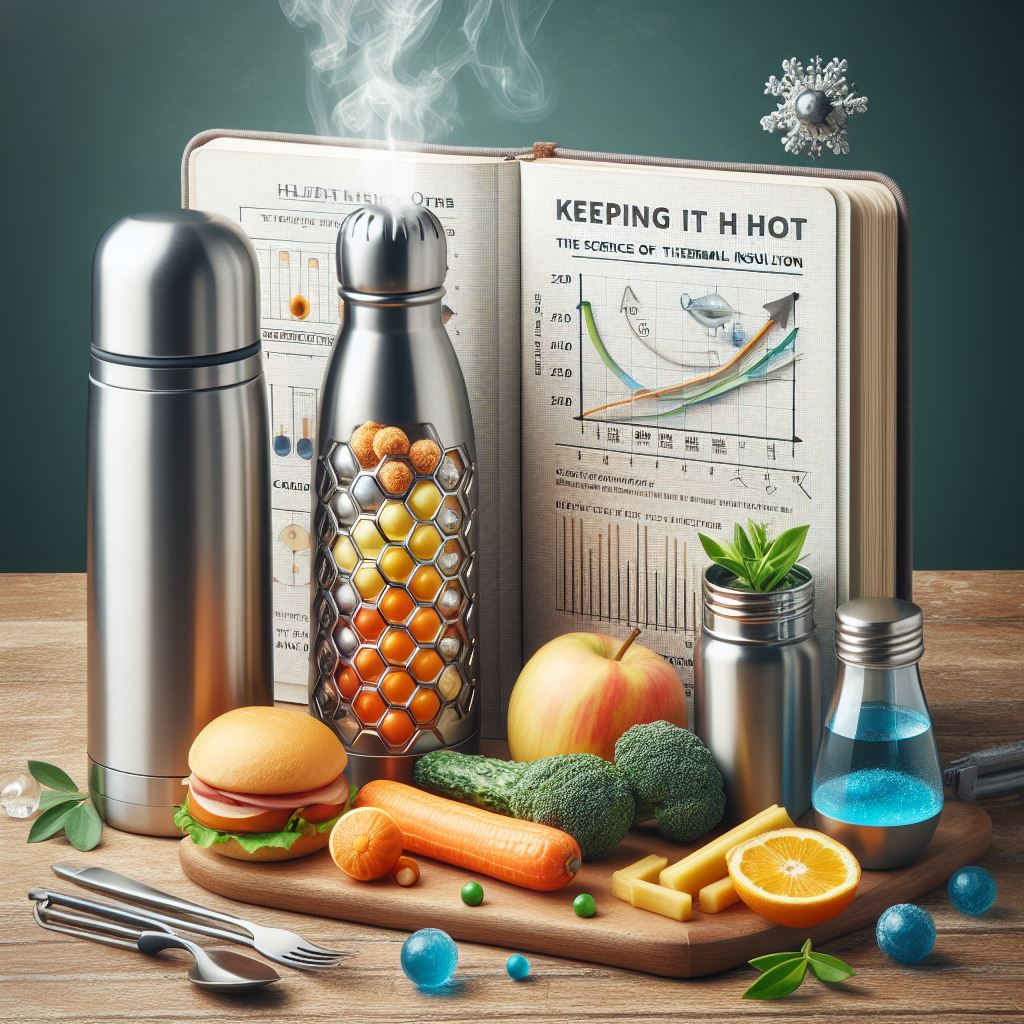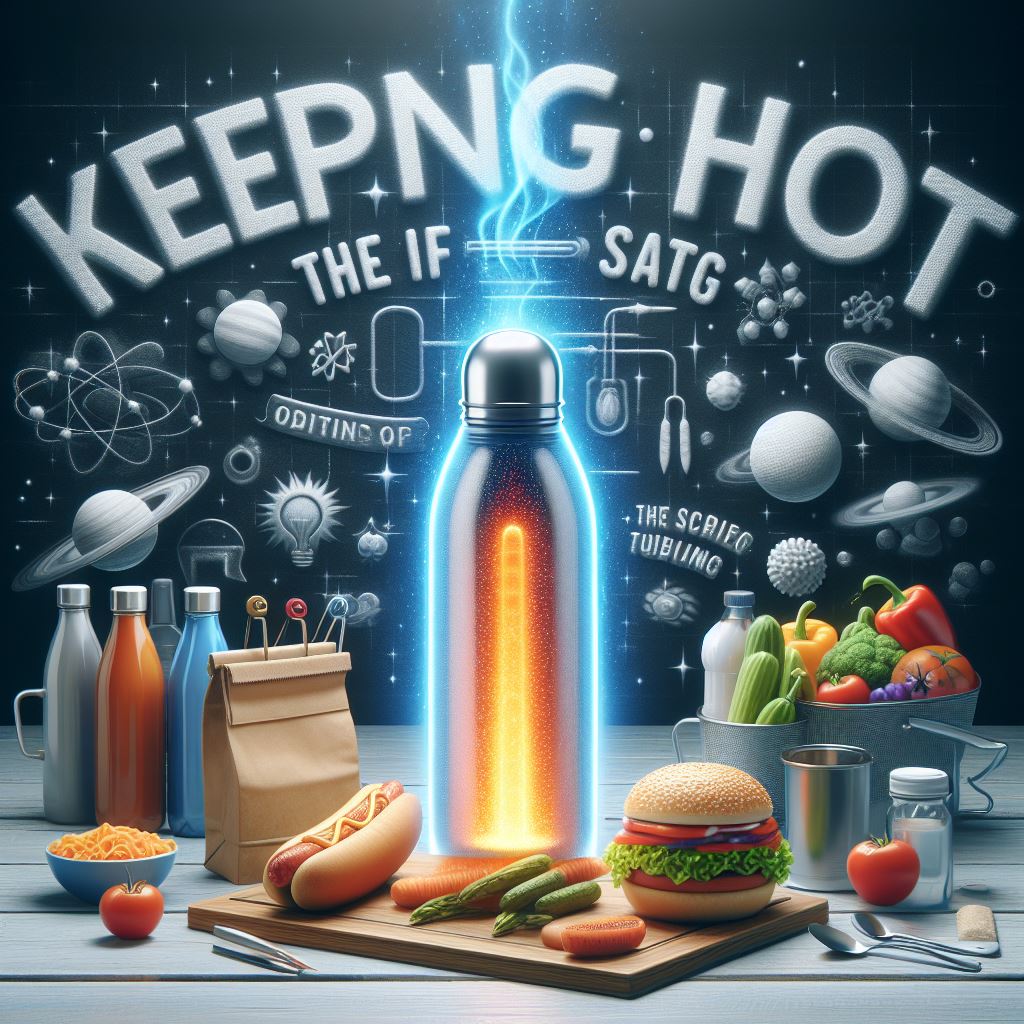Navigating Temperature Control with Food Containers
On the move, ensuring your meals stay at the ideal temperature can pose a real dilemma. Enter the world of food containers, those small wonders of science that keep our chili hot and our salads cool. Ever pondered the secrets these ubiquitous tools hold? Far from sorcery, it’s the principles of thermal insulation at work. This exploration unveils the tech and concepts behind food containers, preserving your food’s perfect state from the moment it’s packed to when you’re ready to enjoy it.

Vacuum Insulation’s Pivotal Role
A star in thermal preservation, vacuum insulation, stands out. By crafting a void of virtually nothing between a container’s layers, it significantly slashes heat movement via conduction or convection. The result? Your beverages remain steaming or icy with barely any change in temperature as hours tick by.
The Virtues of Stainless Steel
Not just for its robustness and anti-corrosive properties, stainless steel is central to food containers for its thermal resilience and food safety. Beyond its passive traits, stainless steel reflects heat back, enhancing the insulation effect.
Unpacking Thermal Insulation Science
To appreciate the functionality of food containers fully, it’s vital to grasp thermal insulation’s underlying principles. Heat navigates in three manners: conduction, convection, and radiation. A well-designed container tackles all three, utilizing materials and structures that curb heat exchange. We delve into these processes and the ingenious countermeasures in container design.
Innovations Shaping Food Containers
The landscape of food containers is rapidly advancing, from vacuum seals to intelligent containers that monitor temperature live. Material science breakthroughs have paved the way for lighter, more effective, and sustainable solutions. This section explores these progressions and their impact on food container utility and convenience.
The Wide-Ranging Advantages
Food containers do more than just preserve your meal’s warmth or chill; they extend into health, financial savings, and ecological benefits. By keeping food and drinks at stable temperatures, containers aid in retaining their nutritional goodness and flavor, encouraging healthier eating patterns. Furthermore, their repeated use significantly cuts down on single-use packaging, supporting eco-friendlier living standards.
Preserving Food Freshness and Safety
A food container’s chief function is maintaining food at a safe, enjoyable temperature for longer, crucial for both pleasure and safety. By keeping meals hot or cold beyond the danger zones, they thwart bacteria growth or spoilage, proving indispensable for outdoor, work, or anytime food access.
Encouraging Healthier Eating Habits
Opting for a food container for your meals can spur a shift towards homemade, nutrient-rich food over processed options. It’s the reassurance that your food stays fresh and safe that might inspire more to cook at home, taking charge of their diet and well-being. Plus, the container’s design ensures meals are kept uncontaminated.
Financial and Environmental Impacts
Regular use of food containers can bring considerable savings by reducing the need to buy on-the-go meals and minimizing waste. From an environmental perspective, it means less dependency on disposable packaging and lower energy use from less refrigeration and microwaving, positioning the humble food container as a hero for both your pocket and the planet.
Innovation’s Hot Streak in Food Containers
Innovation thrives even in the realm of food containers, with new thermal insulation technologies promising to keep meals perfectly tempered for longer, alongside smart capabilities for added functionality. From alerts signaling ideal drink temperatures to adaptive insulating materials, the prospect for food containers is as promising as it is exciting.

Frequently Asked Questions About Thermal Insulation in Food Containers
Thermal insulation minimizes heat flow between objects, achieved in containers through vacuum insulation and reflective materials, tackling all heat transfer modes. Stainless steel’s durability, non-reactivity, and heat-reflective nature make it a top choice. The lifespan of a container’s heat preservation varies, but top-tier models can maintain temperatures for 6-12 hours. Modern versions may feature real-time temperature tracking via apps. Eco-friendly options are increasingly available, emphasizing longevity and recyclability. Selecting the best container involves evaluating material, insulation quality, size, and features like temperature monitoring or spill-proofing, tailored to individual needs and lifestyles.
Looking Ahead: The Evolution of Food Containers
From basic vessels to intricate, tech-infused innovations, food containers have transformed, underscoring the vital role of food preservation in our lives. As we navigate the balance between convenience, health, and environmental stewardship, food containers stand out more than ever. With continuous advancements in insulation tech, the future holds even more efficient, ingenious solutions for keeping our meals “hot” or “cold,” ready for whenever and wherever we need them.
